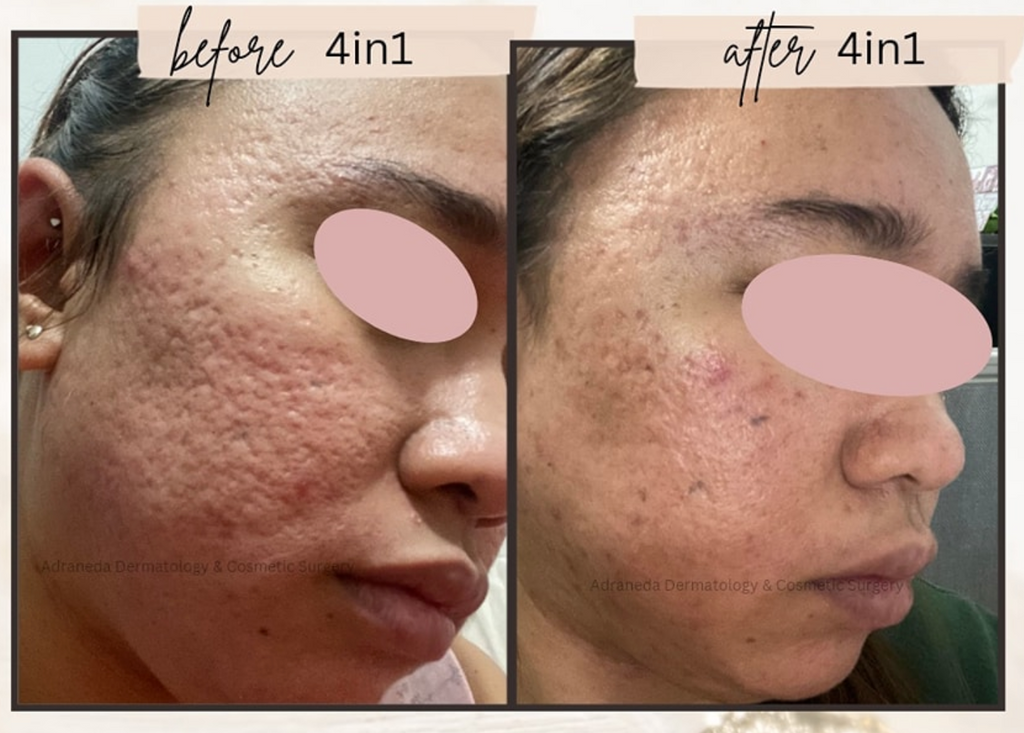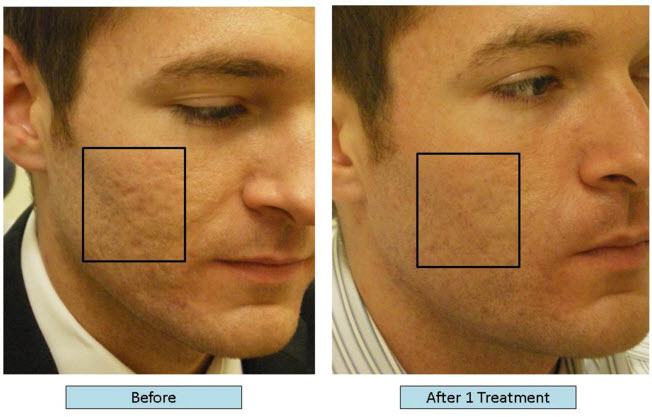Targeted Acne and Acne Scars Treatment: Reclaim Your Clear Skin
A Comprehensive Overview to Managing Skin Disease: Concentrating On the Therapy of Acne Scars
Acne scars stand for a considerable concern for several individuals, usually affecting self-worth and overall skin health and wellness. acne scars. Comprehending the numerous kinds of acne marks, such as hypertrophic and atrophic, is vital for reliable management and treatment. This overview lays out a spectrum of restorative alternatives, from topical agents to advanced expert treatments, each customized to address particular scar characteristics. Integrating way of living changes and a dedicated skincare regimen can play a pivotal function in improving therapy results. As we discover these techniques, the concern develops: what mix will generate one of the most reliable outcomes for optimal skin recovery?
Understanding Acne Scars
Recognizing acne marks includes acknowledging the complex interaction in between skin healing and the inflammatory procedures that occur during acne break outs. Acne develops when hair roots come to be blocked with oil, dead skin cells, and bacteria, leading to swelling. This inflammatory action is vital for battling infection however can additionally lead to damage to the skin's cells.
When the body attempts to heal itself, it generates collagen, a protein essential for skin framework. The quantity and quality of this collagen can differ, leading to different kinds of scars. Factors affecting scar development include the intensity of the acne, private skin kind, genetics, and the body's recovery reaction.
In addition, very early treatment in acne therapy can play an essential duty in stopping scarring. Timely administration of breakouts minimizes swelling and cells damage, which are crucial consider scar growth. Education and learning on appropriate skincare and therapy alternatives is crucial for people susceptible to scarring. Ultimately, understanding the hidden devices of acne and its healing process is essential for reliable administration and prevention of acne marks.
Kinds Of Acne Marks
The intricacy of acne marks can be classified into several unique types, each reflecting the underlying skin damages and recovery action. One of the most common types include atrophic marks, hypertrophic scars, and keloids.
Atrophic marks are characterized by depressions in the skin and are often the outcome of insufficient collagen manufacturing throughout the healing procedure. These marks can even more be identified into icepick, boxcar, and rolling marks, each differing in shape and depth. Icepick scars are deep and slim, resembling little slits, while boxcar marks have a larger, extra angular appearance. Moving scars create a wave-like texture on the skin's surface.
Hypertrophic scars, on the other hand, are elevated and result from an overproduction of collagen during healing. These marks may vary in dimension and can in some cases fade with time but may stay famous.
Keloids are an extra serious type of hypertrophic scarring, extending beyond the original injury website and frequently requiring more aggressive therapy alternatives. Recognizing these kinds is essential for identifying the most efficient treatment approach customized to a person's particular mark type and skin problem.
Topical Therapies

Topical therapies play an essential role in taking care of acne scars, offering people a range of options focused on improving skin texture and look. These treatments mostly focus on promoting skin regeneration, lowering coloring, and enhancing general complexion.
Among the most commonly used topical agents is retinoids, which Continue are by-products of vitamin A. Retinoids promote collagen production and accelerate cell turn over, assisting to reduce the look of marks gradually. In addition, alpha hydroxy acids (AHAs) and beta hydroxy acids (BHAs) can scrub the skin, eliminating dead skin cells and promoting a smoother surface.
One more reliable classification includes topical anti-oxidants, such as vitamin C, which can help to lighten hyperpigmentation related to acne scars while supplying anti-inflammatory advantages. Silicone gels and sheets have been revealed to moisturize and squash scars, making them much less noticeable.
Hydroquinone is often used for its skin-lightening properties, although it ought to be made use of meticulously due to possible side effects. Ultimately, integrating moisturizers which contain ingredients like hyaluronic acid can better sustain skin recovery and improve appearance. For optimum results, it is suggested to consult a skin specialist for individualized treatment suggestions.

Specialist Therapy Alternatives
When it comes to addressing more severe acne marks, people frequently turn to specialist therapy options that can provide much more remarkable results than topical therapies alone. These interventions are generally administered by skin specialists or certified specialists and consist of numerous techniques customized to specific skin types and mark extent.
One of one of the most common therapies is chemical peels, which use acids to exfoliate the skin and promote regeneration. This technique can significantly minimize the look of superficial scars. Microneedling, another reliable choice, includes producing micro-injuries in the skin to promote collagen manufacturing, improving texture and reducing marks.
Laser treatment is additionally extensively used, with fractional lasers especially targeting scarred areas while preserving bordering skin. This approach can generate remarkable renovations in skin appearance over numerous sessions. Furthermore, facial fillers are made use of to restore quantity and smooth out unequal skin surface areas, offering instant, albeit short-term, results.
Way Of Life and Natural Remedy
Incorporating way of life changes and home treatments can play a substantial function in handling acne marks, matching expert therapies. Maintaining a well balanced diet plan abundant in anti-oxidants, vitamins, and minerals can assist in skin recovery - skin rejuvenation treatments. Foods high in vitamin C, such as citrus fruits, and those consisting of zinc, like nuts and seeds, advertise skin regrowth and aid lower inflammation
Hydration is also important; drinking ample water keeps the skin hydrated, aiding in its natural repair processes. Normal exercise enhances blood circulation, which can enhance nutrient shipment to the skin and boost overall skin.
In enhancement to nutritional modifications, incorporating topical natural remedy can be helpful. Natural ingredients such as aloe tea, honey, and vera tree oil have anti-bacterial and anti-inflammatory residential properties, which may assist in lowering the appearance of marks. Scrubing the skin with mild scrubs can additionally promote cell turn over, aiding in the fading of marks over time.
Furthermore, developing a regular skincare regimen that includes sunlight defense is crucial, as UV direct exposure can darken marks. By incorporating helpful site these way of life modifications and home remedies, individuals can improve their skin's healing process and accomplish an extra important site also complexion.
Conclusion
Efficient monitoring of acne marks requires a thorough understanding of their types and the hidden systems involved in scar formation. A mix of topical treatments, professional therapies, and way of living modifications can considerably boost skin recovery and minimize scar exposure.
Understanding acne marks involves identifying the complicated interaction between skin recovery and the inflammatory processes that occur during acne outbreaks. Factors affecting mark formation consist of the seriousness of the acne, private skin kind, genetics, and the body's healing feedback.
These marks can better be classified right into icepick, boxcar, and rolling scars, each varying in shape and depth. Icepick marks are slim and deep, resembling little leaks, while boxcar scars have a larger, more angular look (skin rejuvenation treatments).Effective administration of acne scars requires a thorough understanding of their kinds and the hidden systems entailed in scar development